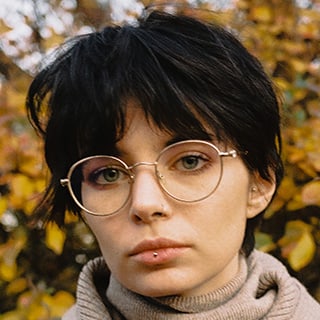Creating a basic video: filming day
In order to film the clip quickly and efficiently, we distribute distinctive roles and responsibilities among the team members. In this guide we tell about who is responsible for what on set.
We have already carefully thought through all the details at the pre-production stage: we worked out the script; we found locations, props and costumes; we approved the way the product and brand will be displayed with the owner; we coordinated the shooting schedule. Now, when the film crew arrives on set, each member of the team has a clear idea of what needs to be done and how to do it.
On the day of shooting we follow the concerted timing. Film director is the one in charge of the whole process. It is the director who makes all the conceptual artistic decisions: how the shots will be staged, what reaction the character will portray, and so on. At the same time, shooting is a team effort. And each team member is responsible for their part of the process.
- Preparing the equipment. The videographer or photographer makes sure that all the necessary equipment is provided for the filming: light, playback, camera. They also check that the equipment is ready to work: cameras are charged, memory cards have enough space, lenses are clean, and stabilizers are balanced.
- Equipment serviceability. The technician makes sure that the equipment and additional accessories (extension cords, chargers, etc.) are functioning properly and ready for use at any moment. They also solve the technical problems that may arise during the filming.
- Setting up the lights. A gaffer or a videographer/photographer sets up the lights at the venue. They select the right light sources and determine their location.
- Preparation of costumes and props. The prop master or costume designer prepares the characters' clothes and props; they make sure that the clothes look neat and are coordinated with the timeline and location of the scenes. The prop master may participate in the artistic part of staging the scene: they help to convey the director's idea through the details of clothing and props.
- Characters’ makeup. If professional makeup is necessary, we hire a makeup artist for the shooting. Anyway, we do need some makeup for characters with natural looks. If the budget does not allow to book a makeup professional, we ask the actors to do all the preparation themselves: to even out the skin tone, and cover redness in the eyes area.
- Shooting process. The director is the key figure on the set. They can take a director’s chair or perform as a videographer. The director sets the concept of the filming, the tone for the scenes and manages the actors’ performance. They are trusted to make decisions on the set by the team.
- Composition and colour. The art director or designer oversees the compositional and colour solutions in working with props and products on set. While performing this task, they still trust the director and do not try to take over the lead during the shooting process.
- Draft editing. If there is an opportunity and free workforce, we do draft editing during the shoot so that the team can see the first results of their work and, if necessary, adjust the plan. Immediately after filming, we send the first editing from the set to the lawyers and ask them to prepare the legal information for the video.
Read next:

